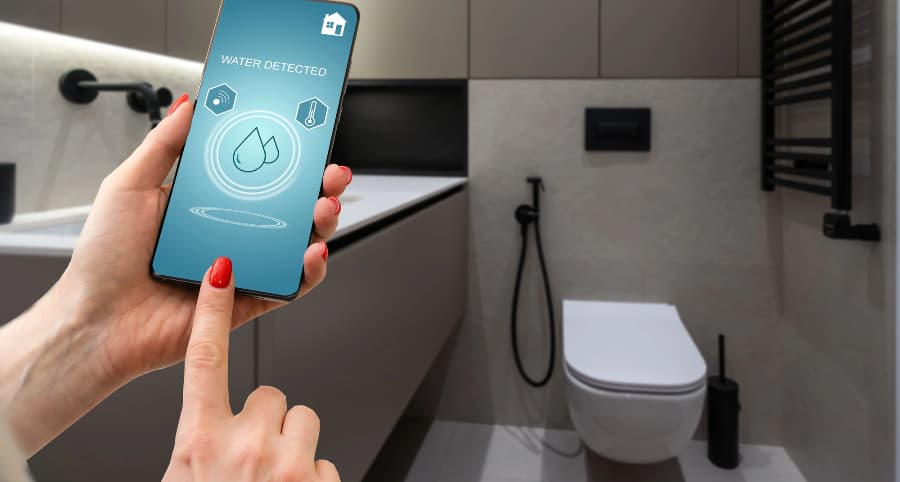How does a water sensor work and why connect one to your Flint smart home?

One minor leak at your house can cause big issues and thousands in damage. You have to protect against this threat; fortunately, there’s an easy way to do so. A water sensor is an effective, simple, and budget-friendly solution. Explore how they work and why you ought to connect water sensors to your Flint smart home.
How water sensors safeguard Flint your home
Water enters homes in many ways, whether from a storm-related event, plumbing problem, appliance snafu, or human error. However it takes place, you must know right away, and this is why water sensors are important. But how exactly do they work?
Many water sensors are conductive and operate with corresponding electrodes. When water infiltrates the space between the electrodes, an electrical link is formed, activating your alarm. You’ll also find capacitive sensors that release an electrical field. When water reaches the conductive surfaces of these components, the field is interrupted, and your alarm triggers. Optical sensors using infrared LED light are an additional possibility.
Get more protection from water sensors
A few specialized water sensors offer even more protection as they use integrated temperature sensors. This is an excellent tool in preventing frozen pipes. If there’s a drastic reduction in temperature, you’ll know at once. Taking action before pipes break will save you from flooding and exorbitant repair costs.
Why integrate water sensors into your Flint smart home?
When water emergencies happen, you must be warned immediately. You can attain this objective by connecting water sensors to your smart home. Whether you’re on site to hear the alarm or away, you’ll get an automatic notification on your smartphone. As an additional backup, your round-the-clock monitoring team will be alerted. Each moment counts in a water emergency to limit the destruction and interruption to your family.
Where should you place water sensors?
Any location prone to water infiltration is an appropriate position for water sensors. Install them in these areas:
- Bathrooms: Position behind toilets or next to bathtubs.
- Basements: Water commonly enters lower floors through leaky walls or due to excessive rain or malfunctioning sump pumps.
- Next to water heaters or appliances: Any water-utilizing appliance may leak over time.
- Under sinks: Water sensors are perfect for discovering pipe leaks in areas you can’t see.
- Attics: Identify roof leaks early and prevent expensive repairs.
Get water sensors with your Vivint smart home
Give your property the complete protection it needs with Vivint’s innovative components. Our water sensors in Flint connect to your Vivint smartphone app to send you automatic updates any time your alarm is triggered. You also benefit from incorporated temperature sensors to avoid pipe freezing. Explore the smart home tools available in Flint by calling (810) 672-7953 today.
